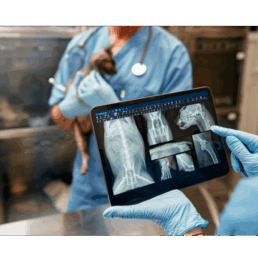Signs Your Outdated Veterinary PACS Is Letting Your Clinic Down
In veterinary imaging, delays, errors, and inefficiencies often stem not from lack of skill but from systems that are simply behind the times. If your veterinary PACS is outdated, you’re likely working around limitations every day: slow access to images, disconnected workflows, frustrated staff, and possibly compromised patient care. In this post, we’ll examine concrete signs that your PACS is out-of-date, backed by current market and academic data, and what features a modern system should provide to bring you up to standard and beyond.
Key Signs Your Veterinary PACS Is Outdated
Below are signs to look for, if you recognize several, it’s likely time to evaluate your PACS for an update.
Poor Performance in Image Uploads, Retrieval & Sharing
-
Slow upload/download speeds: large radiographs, CT/MRIs or even ultrasound files take too long to move across your network or from modality to PACS.
-
Archive search is sluggish; pulling up older studies is time‐consuming because of disorganized storage or inefficient indexing.
-
Limited or manual image sharing – e.g. emailing DICOMs or using thumb drives instead of secure network/cloud sharing.
Weak or Nonexistent Integration with Other Systems
-
Your PACS is isolated – no connection with your practice management system (PMS), scheduling system, billing, or Electronic Health Records (EHR).
-
Duplicated data entry (patient info, case IDs, billing codes) because systems don’t sync.
-
Difficulty comparing current and past imaging because modalities or departments use different tools or formats.
Insufficient Support for Modern Storage, Security, & Compliance
-
Reliance on local hard drives or servers with high maintenance burden, risk of failure or data loss.
-
Weak security controls: insufficient user permissions, weak encryption, or no secure cloud backup.
-
Poor audit trails or versioning, which matter for legal, regulatory, or quality assurance oversight.
Absence of Analytical Tools, Reporting & Monitoring
- No built-in analytics: you can’t track how many cases are reviewed per week, turnaround times, error rates, or workflow bottlenecks.
- Reporting tools are manual or external; you don’t have dashboards that show imaging‐study volumes or modality usage.
What a Modern Veterinary PACS Should Offer (vs. Outdated)
When you’re comparing PACS, these are features to look for - what separates a dated system from one built for today’s veterinary demands.
- High throughput image upload & retrieval across modalities; optimized cloud or hybrid architecture.
- Seamless integration with PMS/EHR, scheduling, billing systems.
-
Species‐ and breed‐aware metadata and anatomical labeling.
-
Annotation, measurement tools, built‐in PACS workflows that reflect clinic reality.
- Strong data security: encryption, backups, user access controls.
- Analytics dashboards, KPIs, monitoring (turnaround time, study backlog, error detection).
-
Vendor support, updates, and roadmap – a sign the PACS will evolve with you.
Why the Cost of an Outdated Veterinary PACS Matters
-
The veterinary imaging market was valued at approximately USD 2.00–2.10 billion in 2024, and is projected to grow at a compound annual growth rate (CAGR) between 6.5 % and 7.5 % through 2030–2035.
-
Clinics using systems that lack integration or modern storage/access features lose time: delays in accessing, storing, sharing images are among the top complaints in Covetrus’s veterinary practice insights.
-
Inefficient systems correlate with increased overhead (IT maintenance, redundant staff tasks) and decreased throughput. Studies in human PACS literature show that older PACS architectures increase review times and error rates; while veterinary‐specific studies are fewer, field reports confirm similar patterns.
What to Do If You Recognize These Signs
- Conduct an internal audit: map out your imaging workflow from capture → storage → reporting → billing.
- Prioritize what issues cause the greatest cost or risk (delays, wrong species labeling, security).
- Compare vendors, asking for demo cases that mimic your clinic’s species/modalities/load.
- Consider ROI tools: estimate time saved, error reduction, fewer staff hours or IT burden.
- Plan for migration: data migration, staff training, backup workflows during transition.
Modern Products by Asteris That Address These Issues
- Keystone PACS – built for vets, with modern imaging throughput, species metadata, integration with PMS/EHR, secure storage, dashboards.
- Omni (dictation/reporting) – speeds up report creation, reduces error.
- StableTrack – practice management system especially useful for equine clinics and species with complex imaging needs, offering scheduling, billing, and integrated record keeping.
FAQs
-
Q: How do I know if my veterinary PACS is truly outdated vs. just underused?
A: If you have frequent delays, repeated workflow friction, poor usability, or gaps in integration, those are more than underuse — they are signs of system limitations. -
Q: Will upgrading to a modern PACS cost more in the long run?
A: Usually the ROI (time savings, fewer errors, better throughput) outweighs the upfront cost — especially when you factor in reduced staff frustration, improved diagnostics, fewer retakes, and less IT support cost. -
Q: What minimum tech specs or features should a clinic demand in a modern veterinary PACS?
A: Secure cloud/hybrid storage, DICOM standard compliance, species/breed anatomical labeling, integration with PMS/EHR, measurement/annotation tools, audit/logging, dashboards & analytics.
Book a Demo of Keystone Omni Now
Submit images directly through Asteris Keystone or via our free and simple Asteris Keystone Community application.
Blog
the latest Updates from Asteris
If you like this post you might like this
Subscribe to our newsletter
don't miss out the updates
from asteris
Sign up to our newsletter to stay in the loop.

 North America
North America Asia/Pacific
Asia/Pacific Europe
Europe Back to Blog
Back to Blog


